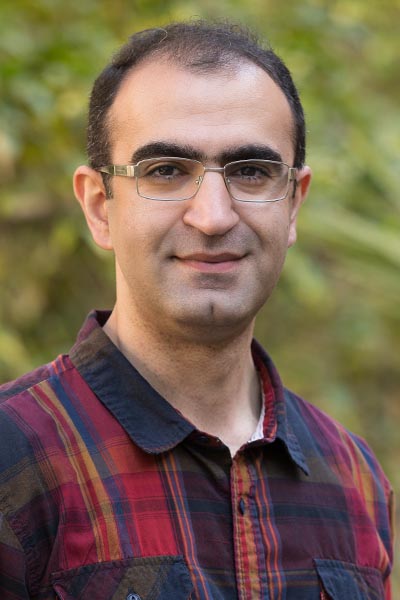
Amjad Askary
Assistant Professor
email: amjada@ucla.edu
phone: (310) 825-0475
office: 5139 Terasaki Life Sciences Building
lab website
Research Interests
Principles of cell fate specification
As an embryo develops, it needs to generate a myriad of cell types, all in specific locations relative to each other and with correct abundances. Retina, for example, contains more than a hundred neuronal subtypes, organized into three layers of cell bodies and two layers of neuropil. These cell types have different features and frequencies and have to be tiled across the retina in a specific way to support the overall function of the tissue. This seemingly impossible task is accomplished during development with incredible robustness. All the instructions for making this intricate structure, as well as all the other tissues in the body, has to be encoded in the genome. So we hypothesize that the blueprints for making tissues like retina are compressible and involve relatively simple principles. Our goal is to identify these principles and utilize them to develop new therapeutic strategies for neurodegenerative disorders.
Our approach involves imaging based genetic barcoding for tracing the lineage and molecular history of individual cells, spatial transcriptomics for mapping cell states, computational modeling for interpreting the results, and synthetic biology for developing molecular tools to manipulate cell fate decisions.
Selected Publications
Amjad Askary, Luis Sanchez-Guardado, James M Linton, Duncan M Chadly, Mark W Budde, Long Cai, Carlos Lois, Michael B Elowitz, "In situ readout of DNA barcodes and single base edits facilitated by in vitro transcription", Nature biotechnology, 38 (1): 66-75 (2020) [link].
Amjad Askary, Pengfei Xu, Lindsey Barske, Maxwell Bay, Paul Bump, Bartosz Balczerski, Michael A Bonaguidi, J Gage Crump, "Genome-wide analysis of facial skeletal regionalization in zebrafish", Development, 144 (16): 2994-3005 (2017) [link].
Joanna Smeeton, Amjad Askary, J Gage Crump, "Building and maintaining joints by exquisite local control of cell fate", Wiley Interdisciplinary Reviews: Developmental Biology, 6 (1): - (2017) [link].
Amjad Askary, Joanna Smeeton, Sandeep Paul, Simone Schindler, Ingo Braasch, Nicholas A Ellis, John Postlethwait, Craig T Miller, J Gage Crump, "Ancient origin of lubricated joints in bony vertebrates", eLife, 5 : - (2016) [link].
Lindsey Barske, Amjad Askary, Elizabeth Zuniga, Bartosz Balczerski, Paul Bump, James T Nichols, J Gage Crump, "Competition between Jagged-Notch and Endothelin1 signaling selectively restricts cartilage formation in the zebrafish upper face", PLoS Genetics, 12 (4): - (2016) [link].
Amjad Askary, Lindsey Mork, Sandeep Paul, Xinjun He, Audrey K Izuhara, Suhasni Gopalakrishnan, Justin K Ichida, Andrew P McMahon, Sonja Dabizljevic, Rodney Dale, Francesca V Mariani, J Gage Crump, "Iroquois proteins promote skeletal joint formation by maintaining chondrocytes in an immature state", Developmental cell, 35 (3): 358-365 (2015) [link].
Amjad Askary, Noriko Shimazaki, Niki Bayat, Michael R Lieber, "Modeling of the RAG reaction mechanism", Cell reports, 7 (2): 307-315 (2014) [link].
Noriko Shimazaki, Amjad Askary, Patrick C Swanson, Michael R Lieber, "Mechanistic basis for RAG discrimination between recombination sites and the off-target sites of human lymphomas", Molecular and cellular biology, 32 (2): 365-375 (2012) [link].

